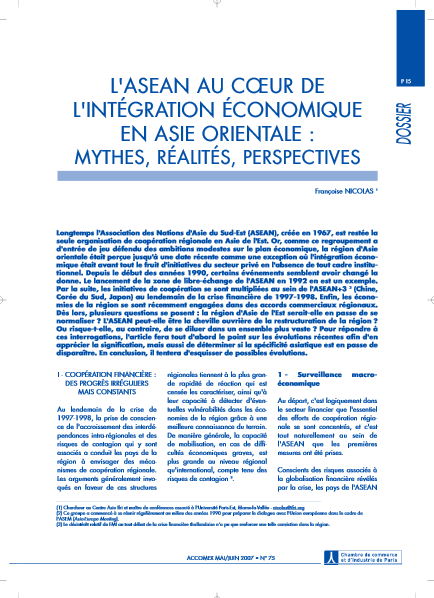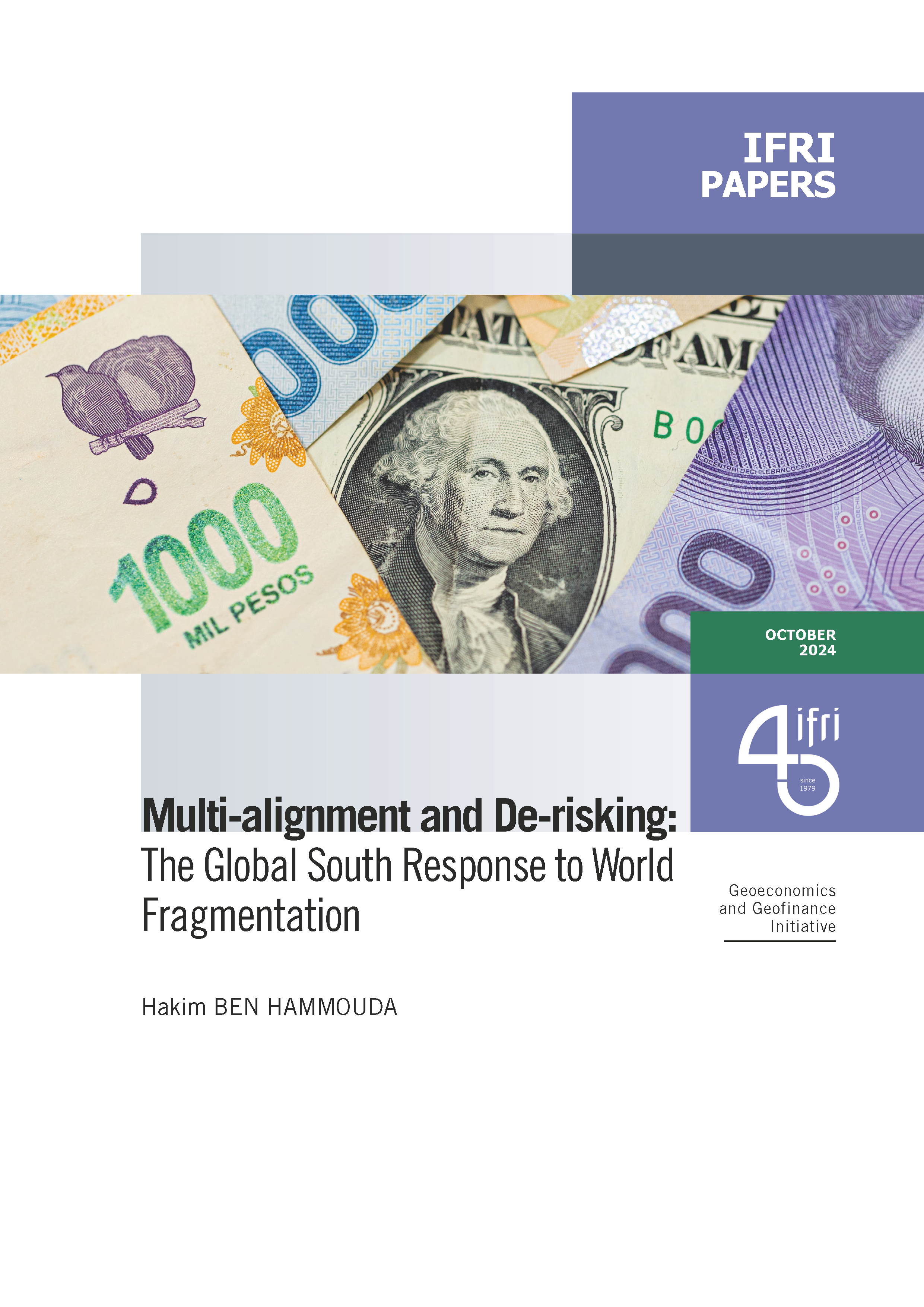L'ASEAN au coeur de l'intégration économique en Asie orientale - Mythes, réalités, perspectives

Until recently, the only formal body of regional integration in East Asia was the Association of Southeast Asian Nations (ASEAN) which had been established in 1967, primarily for political reasons and with modest economic ambitions. As a result, East Asia has long been said to be the champion of loose regional economic integration, with deepening intra-regional trade and investment linkages in the absence of any formal co-operative scheme.
However, the East Asian region has been undergoing deep changes since the early 1990s. First of all the ASEAN Free Trade Area (AFTA) was launched in 1992, with the aim of realizing a free trade area within 15 years. Secondly, the financial crisis of 1997-98 rekindled interest in tighter economic co-operation in East Asia, with the emergence of the "ASEAN+3" framework (which includes the ten ASEAN countries as well as China, Japan and South Korea) as a case in point. Finally, the shift away from traditional support to multilateral trading régime and the recent proliferation of regional trade agreements involving East Asian economies further substantiate the claim of a paradigm shift from market-led to institution-based regional economic integration in East Asia.
These various developments raise a number of questions. Are they indicative of a real shift in paradigm and will these initial steps be turned into a well-structured scheme of regional co-operation ? Can the ASEAN play a key role in the process or will it be dwarfed by its more powerful neighbors ?
The article starts by examining the current state of play of economic cooperation, in the financial and monetary areas as well as in the trade sphere, and highlights the limitations of the formal regional integration movement in East Asia to date. It closes by taking a prospective stance and by assessing the chances of deeper economic integration in the region.
This content is published in French : L'ASEAN au coeur de l'intégration économique en Asie orientale : mythes, réalités, perspectives












